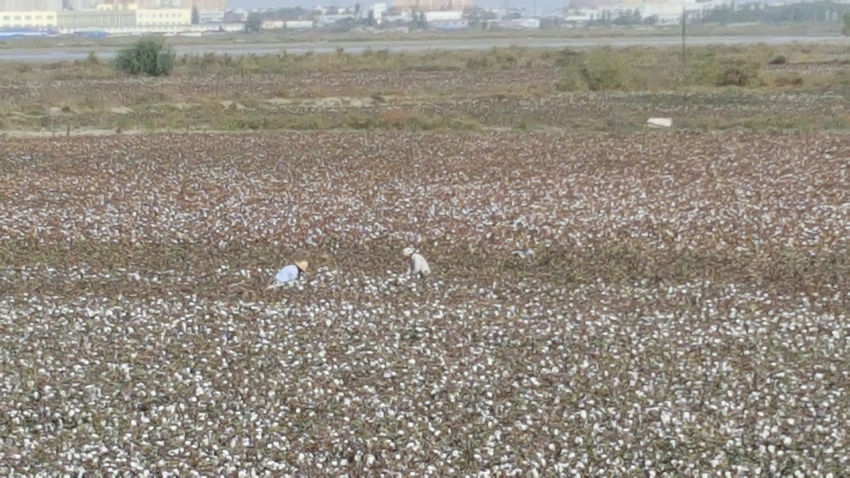October 31, 2016

The regular schedule of crop tours in September and October marks the onset of another harvest season in West Texas.
I went on two crop tours during October. One was in Colorado City, the other was in Xinjiang Province in northwestern China. Xinjiang is the Texas of China, producing between 60 percent and 70 percent of China’s total production. That amounts to over 15 million bales annually being harvested from more than 5 million acres, making Xinjiang the world’s largest cotton patch by far.
Cotton production there is something like what you would see in Arizona or California — the crop land is a flat, desert landscape drained by the Tarim River. To the north are impressive mountains; to the south lies the huge Taklamakan desert; and to the west, Xinjiang is bordered by a number of “-stan” countries, including Pakistan and Afganistan.
The cotton fields we toured were operated by the Xinjiang Production and Construction Corps (XPCC). The latter is a unique, quasi-military government agency that controls land, resources, educational institutions, equipment, and a number of cities in the region.
ROADS, BRIDGES, COTTON
Imagine a setup in Texas where Abilene, Corpus Christi, Killeen, Lubbock, TxDOT, Ft. Hood, Tarleton State University, and 2 million acres of cotton land were all controlled and operated by the Texas Guard. That is an imperfect analogy of what the XPCC is. What the XPCC apparently spends most of its time doing is building roads and bridges, and growing cotton.
The production systems we saw were a mix of very modern practices,plus some things that could only be accomplished with a lot of cheap labor. XPCC land is mostly machine-harvested, and all the fields we saw were drip irrigated.
Prior to planting, they make a couple of trips over the field to shape beds and fertilize. Then a final trip is made to lay drip tape, overlay a clear plastic mulch, and plant, all in one operation. The drip tape is not subsurface — it is laid on top of the furrow, under the plastic mulch.
Subsequent fertilizer is chemigated through the drip system. They indicated one herbicide application is typically made, and mentioned only one pesticide treatment per year, targeting either cotton aphids, spider mites, and/or bollworms. The machine harvested fields receive a defoliant spray.
HAND-PULLED WEEDS
If that all sounds nice and modern, consider that they also go through the fields two or three times hand-pulling weeds. And instead of plant growth regulators, they go through the field pinching out terminals by hand to control plant growth beyond a certain point. At the end of the season, the old plastic mulch is collected by hand and disposed of, while the drip tape is picked up and reused.
It would be a challenge to compare Xinjiang cotton production costs to ours apples-to-apples. For one thing, their growers share and/or rent equipment that is owned by their XPCC division. It is unknown how subsidized the rates of equipment rental are. The same could be said for government operating loans, or for irrigation water. The fact that their alternative crops are red peppers, corn, and rice suggests that irrigation water may be highly subsidized.
Lastly, under the current Chinese farm program, they receive deficiency payments to make up the difference between their local cash price and a generous target price. They would otherwise be stuck with an announced harvest price for seed cotton, with grade standards judged by the local XPCC gin buyer.
For readers with more questions about comparing Chinese costs with ours, our colleague, Bill Thompson, will present a Beltwide paper on the topic in January, based on information that he collected on this trip. So come to Dallas and check it out.
For additional thoughts on these and other cotton marketing topics, please visit my weekly on-line newsletter.
About the Author(s)
You May Also Like




